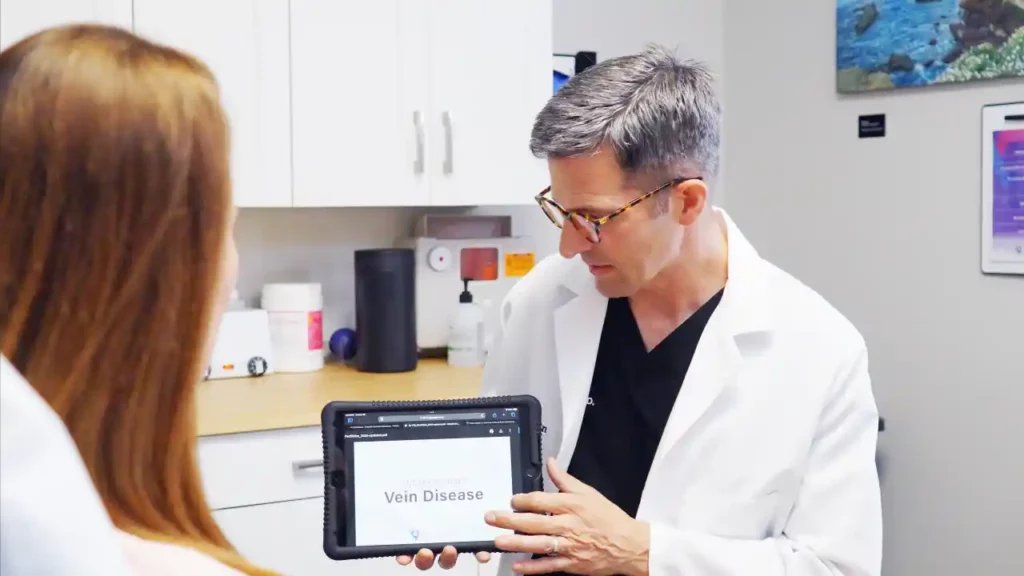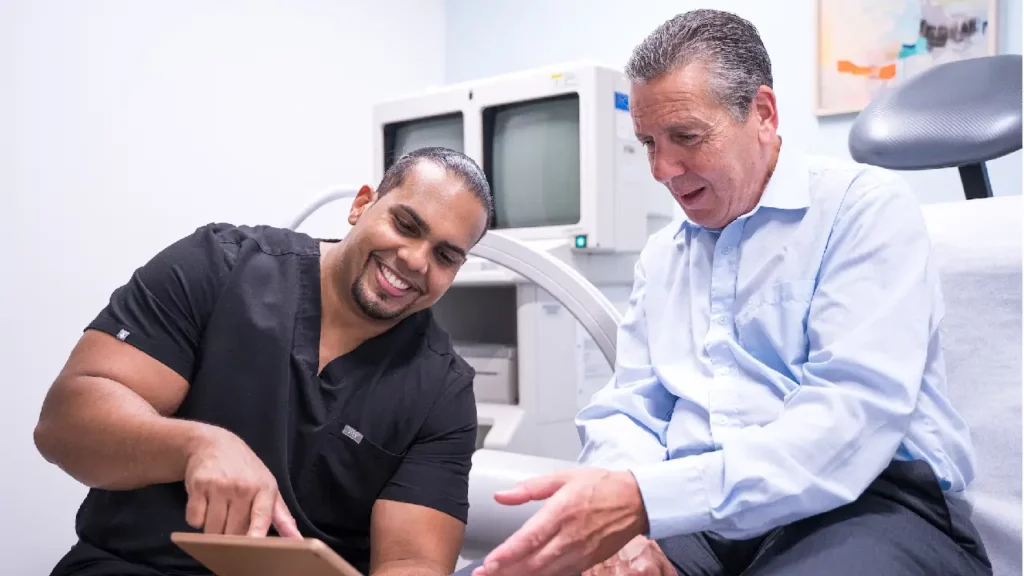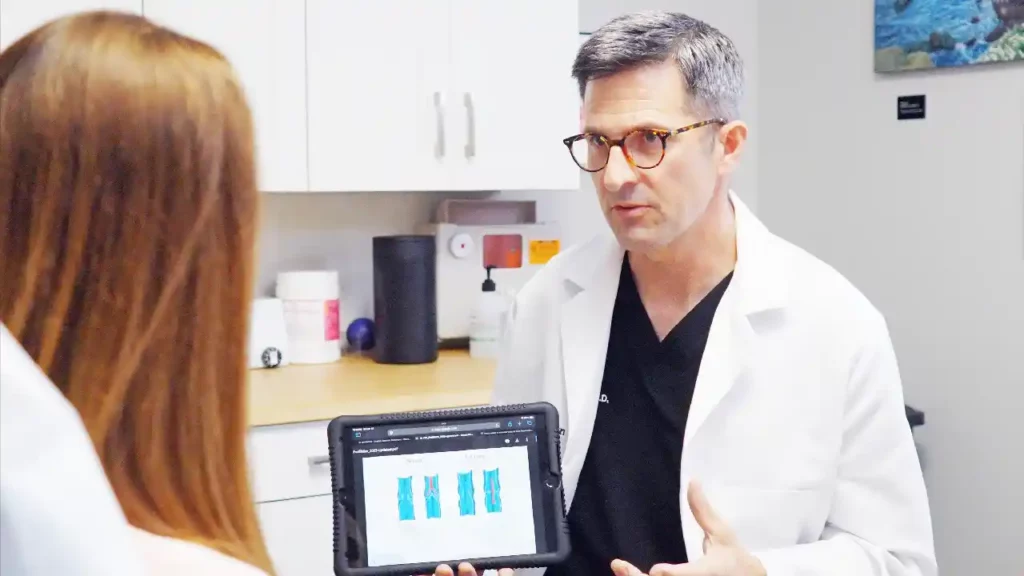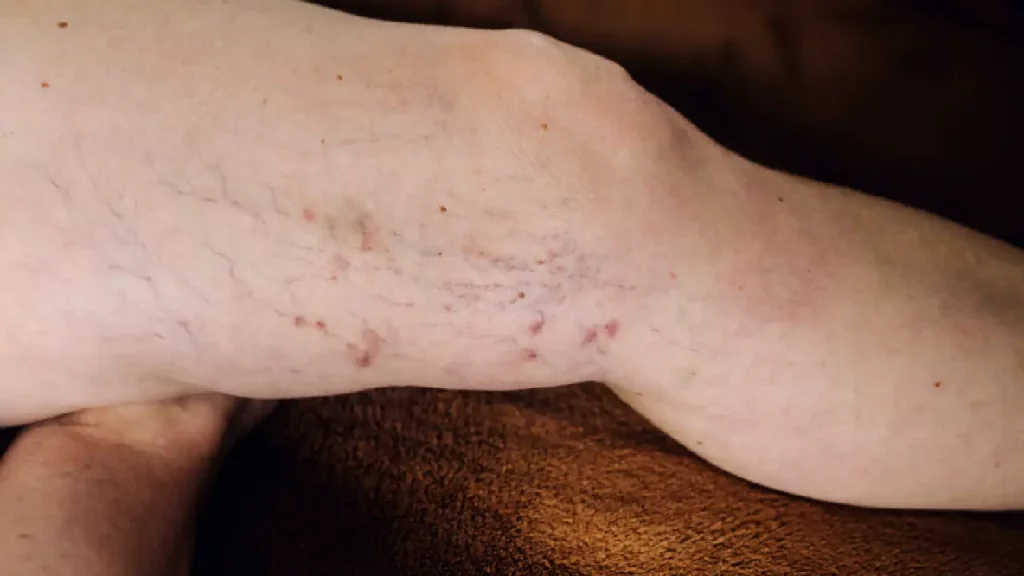Can Varicose Veins Cause Bruising? What You Should Know
Varicose veins are a common condition that can lead to a variety of symptoms, including pain, swelling, and visible discoloration of the skin. One of the lesser-known symptoms associated with varicose veins is bruising. While bruising can have many causes, the weakened vein walls and poor circulation associated with varicose veins can make the skin around them more susceptible to damage and discoloration.
If you deal with varicose veins, schedule an appointment with a vein doctor, or keep reading as we explore the connection between varicose veins and bruising, the symptoms to watch for, and the treatment options available to address this condition effectively.
Varicose Veins and Bruising: Are they related?
Varicose veins develop when the valves in veins, which are responsible for maintaining one-way blood flow, fail to function properly. This malfunction causes blood to pool, leading to stretched, weakened veins that often appear swollen and twisted under the skin. Over time, these veins may exert pressure on the surrounding tissues, increasing the risk of bruising even from minor trauma.
The skin covering varicose veins tends to be thinner and more fragile due to the prolonged stretching of the vein walls and poor circulation. This fragility can cause spontaneous bruising or discoloration, even without significant injury. Additionally, the pooling of blood in varicose veins can cause the skin to take on a bluish or purplish hue, which may resemble bruising even when no external trauma has occurred.
Signs and Symptoms of Varicose Veins
Recognizing the symptoms of varicose veins is essential for early intervention and effective treatment. In addition to visible, enlarged veins, patients may notice:
- Skin Discoloration: Bruising or darkened patches near the varicose veins.
- Pain and Aching: A dull ache or heaviness in the legs, especially after prolonged standing or sitting.
- Swelling: Fluid buildup in the lower legs or ankles.
- Itching or Irritation: Dry or irritated skin around the affected area.
- Bleeding: In some cases, varicose veins can rupture, causing visible bleeding or deep bruising.
If you notice bruising around your varicose veins, it’s important to monitor the severity and frequency. Persistent or worsening bruising could indicate underlying vein damage or vein disease complications that require medical evaluation.
When Does Bruising Signal a Serious Issue?
Bruising around varicose veins can occasionally point to more serious conditions, such as venous insufficiency or a blood clot. Deep vein thrombosis (DVT), for example, is a potentially life-threatening condition that may present with symptoms like swelling, redness, or tenderness in the leg, alongside bruising.
If you experience sudden or severe bruising, intense pain, or changes in skin color, it’s crucial to seek medical attention promptly. These symptoms could indicate compromised blood flow or vein rupture, which require immediate evaluation by a vein doctor.
Why Treating Varicose Veins is Important
While varicose veins might initially appear as a cosmetic issue, leaving them untreated can lead to complications, including chronic pain, skin ulcers, and increased bruising. Addressing varicose veins not only improves their appearance but also alleviates symptoms and reduces the risk of long-term damage.
Treatment options for varicose veins focus on improving blood flow, reducing vein pressure, and preventing further complications. Modern vein treatment methods are minimally invasive, effective, and tailored to each patient’s unique needs.
Treatment Options for Varicose Veins
If you’re dealing with varicose veins and associated symptoms like bruising, a visit to a vein clinic can provide you with a clear diagnosis and customized treatment plan. Common treatments include sclerotherapy and endovenous laser therapy (EVLT).
Sclerotherapy is a widely used treatment for varicose and spider veins, involving the injection of a solution into the affected veins. This solution causes the veins to collapse and gradually fade from view, making it an ideal option for small to medium-sized veins.
For larger varicose veins, Endovenous Laser Therapy (EVLT) offers a minimally invasive solution. This procedure uses laser energy to close off damaged veins, redirecting blood flow through healthier veins, which helps relieve symptoms and improve circulation.
Managing Bruising and Preventing Further Damage
If you’re prone to bruising around varicose veins, there are steps you can take to protect your skin and support vein health:
- Wear Compression Stockings: These can improve blood flow and reduce swelling, minimizing the risk of bruising.
- Stay Active: Regular exercise, such as walking or swimming, promotes circulation and strengthens vein walls.
- Elevate Your Legs: Elevating your legs above heart level helps reduce pressure on your veins.
- Maintain a Healthy Weight: Excess weight can strain veins, worsening varicose veins and related symptoms.
- Protect Your Skin: Use moisturizers and sunscreen to prevent dryness and further damage to delicate skin.
Combining these measures with professional vein treatment can help you manage symptoms and prevent complications effectively.
Seek Professional Help for Varicose Veins
If you’re experiencing bruising, discomfort, or other symptoms related to spider veins or varicose veins, don’t wait to seek help. Early intervention can prevent complications and significantly improve your vein health. A consultation with a vein doctor at a reputable vein clinic can provide you with the information and treatment options you need to feel your best.
Varicose veins can lead to symptoms like bruising, pain, and swelling, but with proper care and treatment, these issues can be effectively managed. Contact a vein doctor today and take the first step toward healthier, stronger veins.
